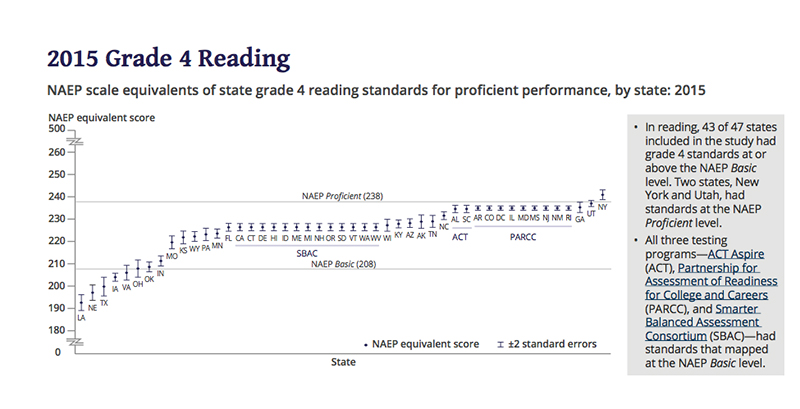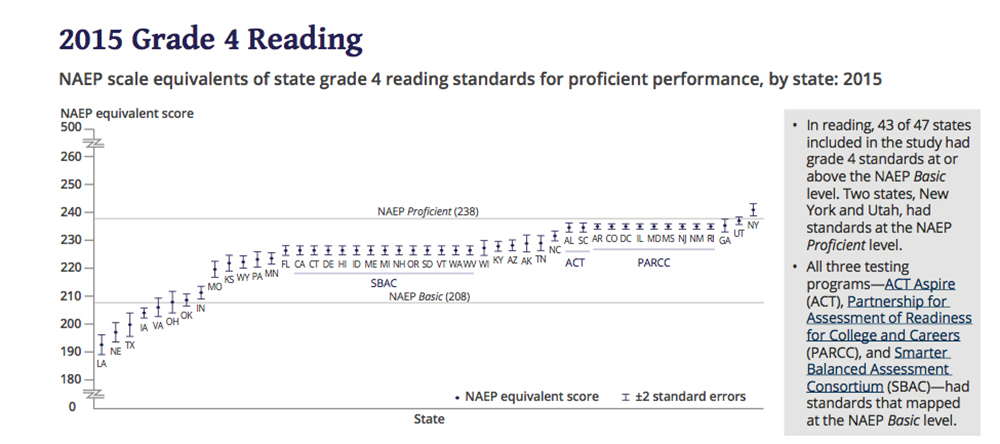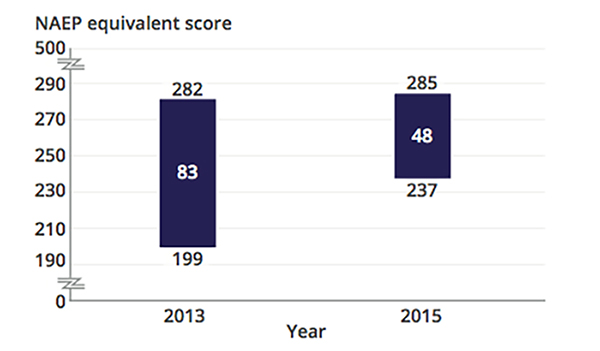Driven by Common Core Rigor, States Are Raising Proficiency Bar for Reading and Math, New Report Finds

A fourth-grader reading at grade level at a Louisiana public school might find himself behind his new classmates if his family moved to New York.
That’s because state exams in New York require a higher proficiency standard for fourth-grade reading than Louisiana’s do. A 48-point-higher standard, to be exact.
That’s according to a comparison of state proficiency standards released today by the National Center for Education Statistics that looks at 2015 data. But more states than ever, including Louisiana, are raising their standards closer to the proficiency bar set by the National Assessment of Educational Progress — commonly referred to as the Nation’s Report Card.
Over the past 15 years, NCES has been tracking how each state defines proficiency and comparing that to NAEP’s benchmark. NAEP is the only common national test taken by students in every state, and it is generally considered to have rigorous standards for defining proficiency (although some have argued that the standards are too high).
The reason for this move toward higher academic standards for reading and math comes from a national push over the past decade for common, rigorous standards, like the Common Core, Peggy Carr, associate commissioner for NCES, said during a call Wednesday with reporters.
But just because state standards are higher, that doesn’t mean students are performing better. Carr said there is no correlation between states with high standards and test results. A recent report from Education Next also found that there is no relationship between rigorous state standards and student performance.
“While higher proficiency standards may still serve to boost academic performance, our evidence suggests that day has not yet arrived,” Harvard professor Paul Peterson wrote in the Education Next report.
Variations in expectations across states have a visible effect on daily classroom instruction, Carr said, making the reading experiences of fourth-graders in Louisiana and New York very different. For example, the gap between these two states’ fourth-grade reading proficiency standards is 48 points on the NAEP scale created by NCES researchers.

But even though the difference between the two states is large, it’s actually an improvement, as Louisiana’s score moved up nine points from 2013 to 2015. Nationally, the gap is shrinking across subject areas and grades: The difference between highest and lowest state standards decreased 35 points in eighth-grade reading, 28 points in fourth-grade reading, 12 points in fourth-grade math, and 10 points in eighth-grade math over that two-year period.

For the first time, the NCES analysis compared standards set by three of the tests that many states use: PARCC, Smarter Balanced, and ACT Aspire. It found that PARCC proficiency standards were the highest of the group.
Not all states were included in this report because of difficulty collecting data or because some administered reading and math tests that couldn’t be easily compared with NAEP.
Get stories like these delivered straight to your inbox. Sign up for The 74 Newsletter

;)
